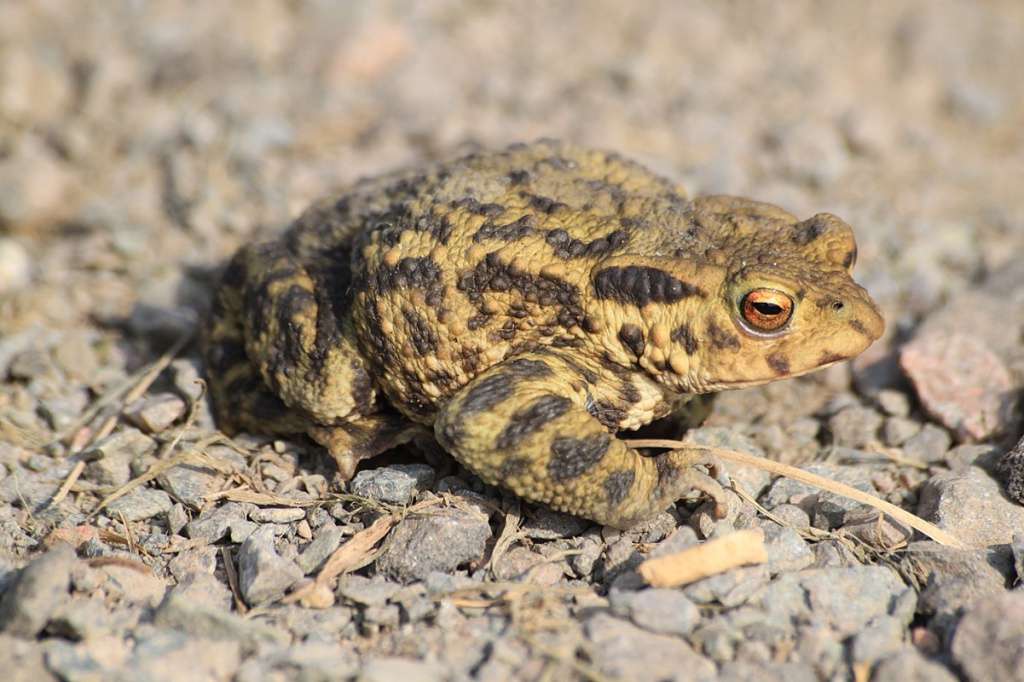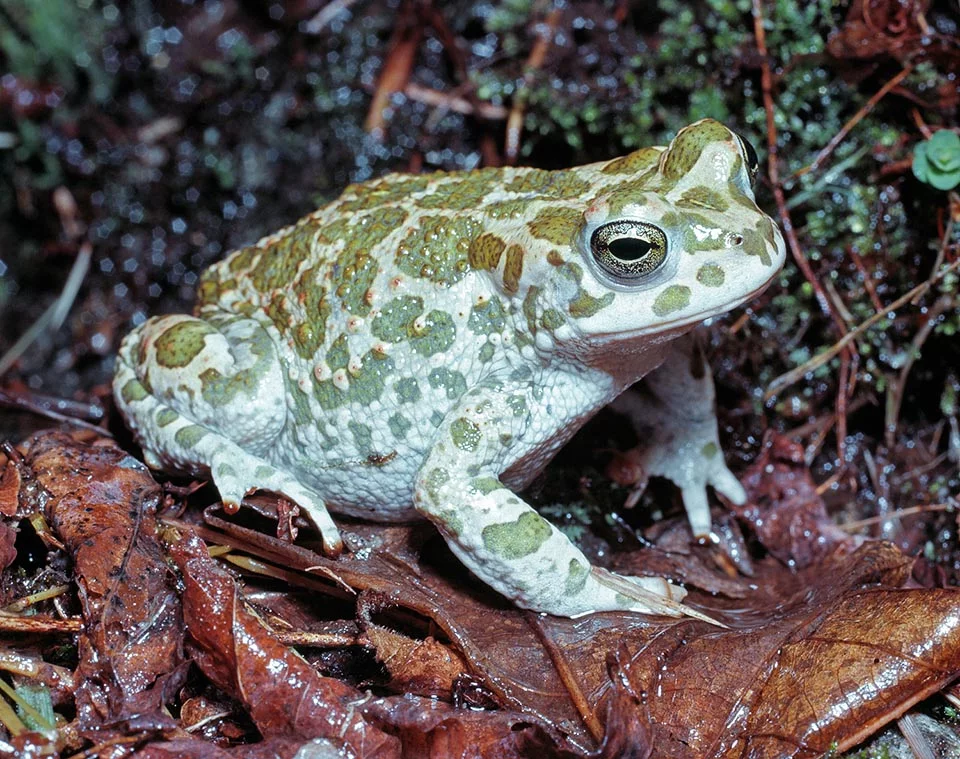
A species of toad that is native to several parts of Europe is called the natterjack toad. The yellow line that runs down their backs can recognize this species’ adults. Every country where they are located has laws protecting them in some way. The natterjack toad is far less common and smaller. There are only a few unique locations in England and Scotland where this frog breeds in warm, shallow pools on sand dunes and sandy heaths; tragically, just one or two colonies are left in south east England and east Anglia. The male natterjack toads sing together at night in the spring to attract females, and their sounds can be heard up to a mile distant.
Habitat and Distribution
Their geographic range includes the western and southern parts of Europe, as well as Ukraine and Belarus in the east. The British Isles’ coastal regions are home to this toad species as well. They occur naturally in 39 areas around the United Kingdom, and 13 further locations have them introduced.
These amphibians may dig their burrows in sand and thrive in open pastures and grasslands. They can frequently be found in lowland heaths, sand dune systems, and salt marshes. This species can also be found in temporary shallow ponds because it needs water to breed. Despite being amphibians, Natterjack Toads cannot swim well enough to survive in deep seas.
Features and Colors
The unusual features and colors of this species make them easy to recognize. Their bodies are between 6 and 8 centimeters long. However, males can lengthen by 10 cm. They have warts all over their dorsal sides, which might be olive, brown, or gray in hue. These warts might be green, crimson, or dark brown in hue. Their backs are covered in a vivid yellow line that extends from the top of their snouts. The underbelly is a creamy white colour with streaks of dark green. The males’ off-white necks have a blue or purple hue to them. They have short, flattened limbs with partially webbed feet and flattened bodies. In the course of the mating season, the males grow nuptial pads. Compared to the Common toad, this species’ eardrums are less obvious. Additionally, two parotid glands can be found behind the eyes of natterjack toads. Their eyes are green or gold, with black pupils that are horizontal. Their eyes are all black.

Reproduction and Life Cycle
At 3 to 4 years old, this species’ toads reach reproductive maturity. Temporary ponds’ warm waters are used for mating. As they approach the breeding ponds, the male Natterjack Toads cry loudly to entice the females. The males’ nuptial pads facilitate mating for them. Females lay a string of 1500–5000 eggs. The eggs are placed in a double row that eventually becomes a single row in the shallow pond water.
Within a very short period of time after the eggs are placed, the temporary breeding ponds have a tendency to dry out. This explains why the Natterjack Toad eggs hatch into tadpoles in approximately 7 to 10 days. The transformation of the tadpoles into toadlets takes a further 6 to 8 weeks. When the baby toadlets emerge from the water, their bodies are dark in hue. They do, however, have the recognizable yellow line on their backs.
Diet
For example, ants, woodlice, mollusks, worms, moths, spiders, and ground beetles are just a few of the minute invertebrates that this species’ adults eat. They also consume small reptiles in their diet. The tadpoles start off eating algae but eventually switch to a diet of dead fish, tadpoles, and other small aquatic creatures.
Keeping as Pet
These toads shouldn’t be kept as pets by everyone because they are poisonous. Because of their toxic skin, these toads must be treated cautiously if maintained as pets. Since the natterjack toad population is drastically declining and it is illegal to maintain, capture, or disturb them, keeping one as a pet is not possible.
Table





